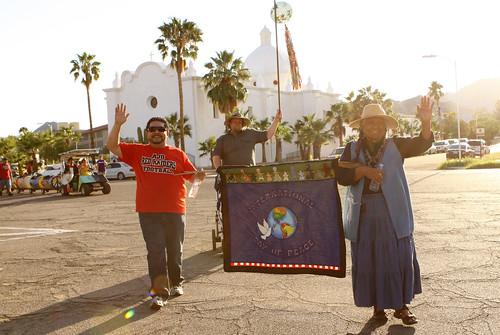
As rural communities search for new and viable economic approaches, it is becoming clear that one core component of many successful rural communities is the presence of vibrant arts and cultural opportunities. Last month I had the opportunity to speak about rural arts initiatives and how USDA Rural Development is engaged with local communities and private foundations to provide awareness of our infrastructure programs and how they can assist in supporting local cultural strategies.
At the Americans for the Arts annual meeting I had the honor of representing USDA on two panels where our Rural Development programs were part of the mix. The sessions included discussion of ArtPlace, a consortium of national and regional foundations, and their efforts to support rural communities. Projects in Lanesboro, Minnesota and Ajo, Arizona are recent ArtPlace grantees, and we had the opportunity to explore ways in which USDA’s infrastructure programs might be able to leverage this new boost of philanthropic support as these communities work to demonstrate how cultural development is an essential ingredient for rural communities in the next generation.
One recent example demonstrating strategic alignment between foundations and USDA is an artist housing project in downtown Minot, North Dakota. The Magic City Lofts received an ArtPlace grant in 2012 to help complete construction of the building. And this June, one of the new tenants in the building, the Turtle Mountain Tribal Arts Association received a $97,000 USDA Rural Business Enterprise Grant for technical assistance associated with establishing a storefront gallery for tribal artists in the new building.
The conference also allowed USDA to discuss our various programs and those of other federal agencies. Our ongoing collaboration with the Partnership for Sustainable Communities is one way the Obama Administration is supporting rural areas. Last year’s Rural Jobs Accelerator grants were a call to promote regional approaches to economic development, and one of the successful grantees involved a regional cultural strategy in SW Virginia centered on the Crooked Road Heritage Trail. The project involved funding from USDA, the Economic Development Administration, and the Appalachian Regional Commission.

A similar set of conversations was had at the Rural Arts and Culture Summit in Morris, Minnesota where the Center for Small Towns at the University of Minnesota-Morris, played a gracious host. Organized by Springboard for the Arts’ field office in Fergus Falls, this remarkable gathering involved over 200 arts leaders focused on ensuring that rural arts and culture remain a viable component of the state’s rural communities. The Summit was another example of how philanthropies, such as the McKnight and Mardag foundations, are key partners in supporting the rural cultural economy.
One project that caught my eye was the Franconia Sculpture Park in Taylors Falls, Minnesota. Visiting Franconia is a remarkable experience. Artists-in-Residents use their time onsite to build large sculptures that are then placed on display for free public viewing on a 20 acre site amidst the farmland. Franconia, and its employees and artist residents, though more importantly its thousands of visitors, provide a noteworthy boost to the rural communities of Taylors Falls, MN and St Croix Falls, WI, the latter of which is home to a vibrant local performance theater, the St Croix Festival Theater. These engaging destinations struck me a wonderful places to help urban visitors gain a greater appreciation of how cultural enterprises help sustain rural communities.

